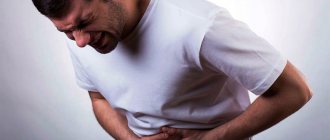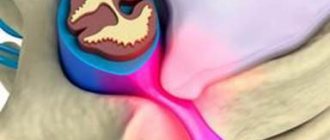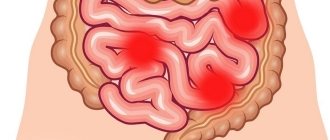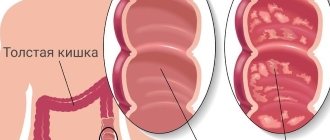Chronic cholecystitis is an inflammation of the walls of the gallbladder, which is accompanied by disorders of the biliary system of a motor-tonic nature. This disease occurs quite often. In order to recognize it in time and take appropriate measures, you need to know its main symptoms and methods for diagnosing chronic cholecystitis.
Causes of chronic cholecystitis
Chronic cholecystitis is based on opportunistic microflora:
- staphylococci,
- streptococci,
- Escherichia,
- Pseudomonas aeruginosa,
- enterococci
Sometimes the cause may be bacterial pathogenic microflora, in particular salmonella, shigella, protozoal or viral infection. There are three main ways for microbes to enter the body:
- hematogenous,
- contact,
- lymphatic.
Parasites also provoke cholecystitis. Damage to giardiasis, opisthorchiasis, ascariasis, fascioliasis, strongyloidosis. These parasites lead to partial obstruction of the bile duct. Ascariasis provokes a cholangiogenic process, fascioliasis leads to cholangitis, and with giardiasis the function of the bile ducts is impaired.
Cholecystitis always begins with disturbances in the outflow of bile. It stagnates, in connection with this, cholelithiasis, GIVP, which are the immediate precursors of chronic cholecystitis, can develop. But there is also a reverse movement of this process. Due to chronic cholecystitis, pancreatic motility slows down, bile stagnation develops, and stone formation increases.
In the development of this pathology, nutritional disorders play an important role. If a person eats large portions with significant intervals between meals, if he gorges himself at night, eats fatty, spicy foods, or eats a lot of meat, then he is at risk for developing cholecystitis. He may develop a spasm of the sphincter of Oddi, and bile stagnation may occur.
Types of gallstones
Homogeneous (uniform) stones. This group includes cholesterol stones formed due to metabolic disorders. These radioactive formations, which do not cause inflammatory changes in the gallbladder, are most often found in obese patients.
Bilirubin (pigment) stones, which arise as a result of increased breakdown of red blood cells, are characteristic of patients suffering from congenital hemolytic anemia, thalassemia, and sickle anemia. They are also formed in an aseptic environment. Calcareous stones (very rare formations) arise as a result of complications of acute inflammatory processes in the bile ducts.
Mixed stones (this group makes up 80% of the total number of gallstones). The core of such a stone is presented in the form of an organic substance, around which cholesterol, bilirubin and calcium salts are located in layers.
Complex stones (10% of the total). They are a combination of both forms. The core consists of cholesterol, and the shell is a mixture of bilirubin, cholesterol and calcium. As a rule, complex stones are observed with inflammation in the gallbladder and biliary tract.
Signs of cholecystitis
Taking certain medications can trigger the development of cholecystitis
Any signs of cholecystitis do not appear immediately. They make themselves felt gradually. First, atony or hypotension of the neuromuscular base of the gallbladder develops. Inflammation of its mucous membrane begins after the spread of microbes.
Then the inflammation affects the submucosal layer and moves to the muscle layer. Thus, inflammation gradually affects all layers of the wall of the pancreas. Infiltrates are formed there, connective tissues grow pathologically.
If the transition to the serous membrane is allowed, adhesions with the liver capsule and other organs will appear. Inflammation will affect the intestines, duodenum, and stomach. This condition is usually called pericholecystitis. In this situation, the condition may not be limited to catarrhal inflammation; phlegmous or gangrenous manifestations appear.
In advanced cases, the integrity of the walls of the gallbladder is compromised due to abscesses, ulcerations, and foci of necrosis. The gangrenous form is the rarest development of this pathology. Its cause is an anaerobic infection. This form ends with putrefactive destruction of the walls of the bladder.
With chronic cholecystitis, the disease lasts a long time. Periodically, the symptoms appear more clearly, and periodically subside.
All manifestations of cholecystitis are due to the fact that this pathology leads to difficulty in the outflow of bile from the gallbladder. This is accompanied by dyskinesia, which leads to the inability of bile to enter the duodenum.
What can you see on an ultrasound?
Using this research method, the following diseases can be diagnosed:
- different forms of cholecystitis,
- abnormalities in the development of the gallbladder during embryogenesis,
- gallbladder stones,
- tumor processes,
- agenesis,
- hydrocele of the gallbladder,
- organ enlargement.
what can be seen on an ultrasound
Only timely detection of the disease makes it possible to carry out full treatment. Most diseases can be cured with medications. In advanced cases, one can only hope for surgical intervention.
Usually the research takes about an hour, or even two. Therefore, it should only be carried out if prescribed by a doctor.
The person should lie down on the couch and remove clothes to the waist. To make the picture clearer, you need to lubricate the area with silicone gel. Using the sensor, the doctor can determine the structural features of the organ, its size, and more. A prerequisite is to carry out the procedure on an empty stomach.
Then you need to study the function of the organ. In this case, the patient should have breakfast before the procedure. Then the doctor will receive a picture before and after eating. It is best to use boiled chicken eggs for breakfast.
After the food has been digested a little, you need to conduct the study again. It is important to perform ultrasound in different positions of the patient.
Pain syndrome with cholecystitis
You can recognize this disease by its rather characteristic pain. They are felt in the right hypochondrium. Sometimes they are well felt in the epigastric region. The pain often radiates to the scapula, shoulder, and collarbone on the right. Very rarely the pain reaches the left hypochondrium. Pain manifests itself if the diet is disrupted. When a sick person eats fatty, fried, spicy, eggs or drinks beer, carbonated drink, wine, cholecystitis will manifest itself with severe pain. Such manifestations are caused by severe cooling, stress, and physical overexertion.
Pain manifests itself depending on where the source of inflammation is located, what size it is, and how severely dyskinesia has developed.
If inflammation occurs in the cervix or in the duct, the pain will be very severe and manifest itself in separate attacks. If the lesion affects the body of the bladder itself or its bottom, then the pain will be permanent.
If dyskinesia is hypotonic in nature, then the pain will not be very acute, but it will become annoying, nagging, and almost constant. With pericholecystitis, the pain becomes aching and does not leave the patient for a second. If the patient is disturbed (driving in a shaking car, bending, turning), it will be felt more clearly.
Dyspeptic syndrome
With cholecystitis, dyspeptic syndrome often manifests itself. It makes itself felt by a bitter taste in the mouth and regular bitter belching. This is accompanied by unpleasant sensations of a bloated abdomen, stools are disturbed, and the intestines are distended. Sometimes it starts to feel nauseous, and there may be bitter vomiting. If the gallbladder is in a state of atony or hypotension, then after vomiting relief may occur: relief of heaviness, reduction of pain.
If dyskinesia is hypertensive in nature, then vomiting only makes it worse and the pain becomes stronger. By the amount of bile in the vomit, you can determine the degree of bile stagnation. Its quantity directly depends on this. The greater the stagnation, the more bile there will be in the vomit.
Vomiting occurs after strong experiences, against the background of eating prohibited foods, or due to physical overload.
Prevention
In order not to encounter gallbladder diseases, you just need to lead a healthy lifestyle and choose the right diet. It is necessary to eliminate all bad habits, especially alcohol, nicotine and fatty foods. It is also worth adjusting the amount of salt consumed. It should not be more than 5 grams per day. You also need to monitor your water balance.
Ultrasound of the gall bladder, prevention
As soon as you experience alarming symptoms, you should immediately consult a doctor. Only correct and timely diagnosis will significantly increase the chances of a quick recovery and prevent the occurrence of chronic inflammation of the gallbladder
.
Inflammatory-intoxication syndrome in cholecystitis
If cholecystitis worsens, body temperature rises. The temperature rises slightly: to subfebrile levels. This happens in the case of catarrhal inflammations. If cholecystitis becomes destructive or complications begin, the temperature rises to febrile levels.
With purulent inflammation, the condition worsens sharply. Weakness, sweating, chills are observed, and a hectic temperature curve is formed. This condition occurs with gallbladder epiema or liver abscess.
If the body’s reactivity is reduced (this happens with general weakness, as well as in old age), then even with a purulent lesion, the temperature may not rise at all or rise only to subfebrile levels.
Forecast
Prognosis for curing the disease largely depends on how it progresses.
Thus, an uncomplicated course of cholecystitis, as a rule, has a favorable prognosis. Complicated forms of the disease, as well as the presence of severe concomitant diseases, lead to a significant deterioration in the prognosis for cure - the mortality rate of patients with these pathologies is 50-60%.
This is explained by the fact that complicated forms of the disease are accompanied by the rapid development of empyema and gangrene of the organ, liver abscesses, fistulas, and peritonitis.
Atypical cholecystitis
In a third of all patients with cholecystitis, the disease proceeds according to a non-standard pattern. There is a cardiological form. It manifests itself in severe pain in the areas of the heart. Moreover, such sensations appear after eating. This is especially often felt when you lie down to rest after eating. Arrhythmias, in particular extrasystoles, are possible. The ECG shows flattening and even inversion of the T wave.
There is also an esophagalgic form. It causes heartburn and a dull pain behind the sternum. Patients complain that after eating they get a “stake” behind their sternum. The pain may not go away for quite a long time. It may even be difficult to swallow food.
An intestinal form is also found. The pain in this case is not severe, does not have a clear localization, and can be felt throughout the abdomen. Patients complain of constipation and bloating.
Laboratory methods for diagnosing chronic cholecystitis
When the exacerbation stage occurs, signs of an inflammatory process appear in the blood test: ESR increases, neutrophilic leukocytosis appears, and the leukocyte count shifts to the left. Eosinophilia develops. If the disease is complicated, then increased cholesterol and bilirubin will be observed.
Duodenal intubation allows you to examine bile and get a more accurate picture of what is happening. If the bile is cloudy, contains mucus, flakes, cellular detritus, columnar epithelium, then inflammation is occurring. True, the signs do not speak of cholecystitis itself, but of duodenitis, which always accompanies this disease. If during a bile microscope a huge number of eosinophils are noted, one can assume that there are parasites in the internal organs.
If cholesterol or calcium bilirubinate crystals are detected, this indicates that stone formation, which is associated with a predisposition to cholestasis, can be predicted.
A bacteriological examination of bile is required. It allows you to determine which infection caused the disease, as well as determine how sensitive the flora is to antibiotics.
Forms of the disease
Doctors classify chronic cholecystitis based on the cause of inflammation and the nature of the disease. There is also a classification based on the severity of symptoms.
Basic forms:
- Chronic calculous cholecystitis is the most common variant of the disease, resulting from blockage of the excretory ducts of the organ with stones. Characterized by severe symptoms during exacerbations. The inflammatory process can spread to adjacent anatomical structures, including the diaphragm and pleura.
- Chronic noncalculous cholecystitis is a rarer form of the disorder, often diagnosed in patients with severe illness. In this case, the inflammatory process occurs due to injury, surgery, severe infection and other reasons not related to the formation of stones. If not treated in a timely manner, non-calculous cholecystitis can cause the patient's death.
The danger of chronic inflammation is due to the erased symptoms. Patients pay attention to unpleasant sensations only during exacerbations, as a result of which the disease gradually progresses and causes complications.








